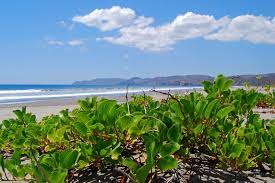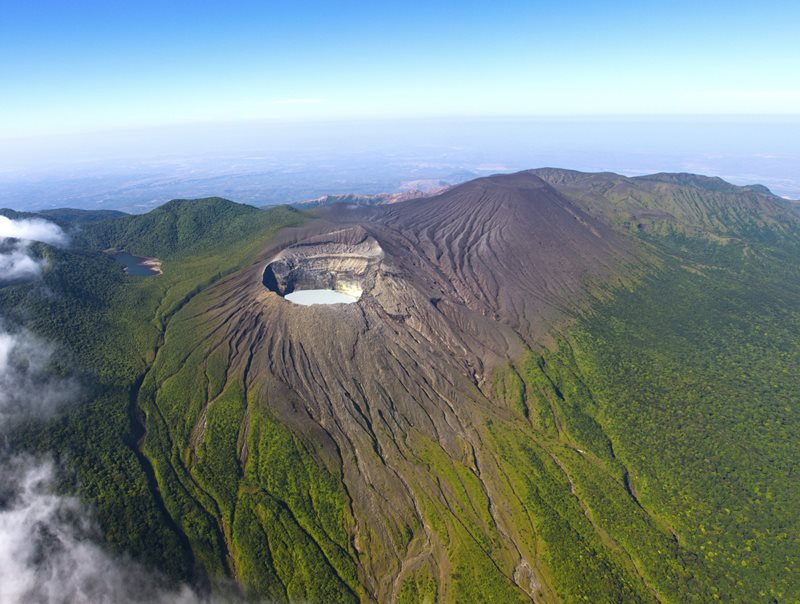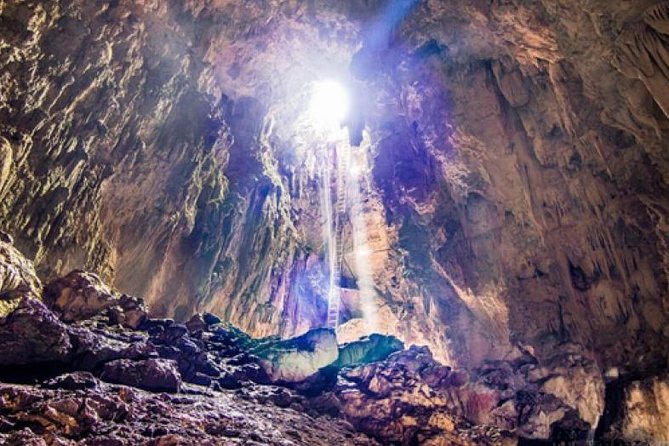National Parks of Costa Rica – Expirience the beautiful nature of Costa Rica
Very well, a total of 25.6 percent of Costa Rica’s land area falls under conservation. These areas, mainly national parks, have been declared protected zones or protected areas (Area de Conservación).
Managed since the early 1970s by a National Park Service (Servicio de Parques Nacionales). Then, also in 1994, the SINAC (Sistema Nacional de Áreas de Conservación) was created as the authority responsible for the protected areas. So far so good, sometimes the organization and supervision is not without problems.
National Parks – Poas Volcano National Park (5600 ha)
The national park was founded in 1971. This national park consists of a species-rich cloud forest and the famous Poas Volcano. At the entrance of the park, there is a visitor center where interested people can book detailed information and guided tours of the volcano by competent environmental staff.The altitude of Poas Volcano is 2708 meters and it is located about 30 kilometers north of Alajuela and 50 kilometers (1.5 hours) from San Jose.

The volcano has the highest activity from 1952-54. In 1952, Poás ejected ash and steam masses up to 8000 meters into the atmosphere. Today the volcano is relatively quiet, but smaller eruptions occur from time to time.
In the crater of the volcano is an acid lake, which has a diameter of 1.5 kilometers and a depth of 300 meters, making it the second largest volcanic crater in the world. The water of the lake is turquoise blue and the pH value is less than 1, making the crater lake one of the most acidic in the world.
The best view of the crater is from the viewing platform at the crater rim, where you can watch the smoke coming out very nicely. It is recommended to visit the volcano in the early morning hours, as the summit is covered by clouds during the day.
From the main crater, a 30-minute hike takes you to the blue Botas Lagoon, a long-extinct crater filled with rainwater. Around the lagoon you will find a tropical dwarf forest adapted to the altitude. In addition, on the interesting hiking trail you can observe many animals.
National Parks – Guanacaste National Park (32 512 ha)
The national park was founded in 1989 and is still hardly used for tourism. The protected area includes the overgrown volcanic slopes of the Orosi and Cacao volcanoes. Here stretches an evergreen rainforest. The existence of this park is due to Dr. Daniel Janzen, who sought donations to establish this national park. This national park has great importance for wildlife, as many of them migrate to the grazing highlands of Nicoya Island during the dry season.

You can find animals such as peccaries, howler monkeys, coatis, capucina monkeys and numerous bird species.
Santa Rosa National Park (49 515 ha)
Santa Rosa National Park was founded in 1971 and is located in the north, on the Pacific coast, on the border with Nicaragua. In 1855 and 1956, two historically important battles for Costa Rican independence took place on this land, which are still commemorated by two memorials.
The National Park borders the Pacific Ocean, which is why Nancite Beach is also one of the most important egg-laying sites for the „bastard“ sea turtles during the months of July-December.

The National Park consists of tropical dry forest, where animals such as coyotes, peccaries, tapirs, coatis and different species of sea and land turtles live. There are also pumas and jaguars, which are rarely seen.
The park is very scenic, but even here you will find few tourists. The national parks in Costa Rica are protection and rest areas of nature.
Tenorio Volcano National Park (18 402 ha)
This national park exists since 1995 and is located in Guanacaste, in the west of Costa Rica. The Tenorio Volcano and the Montezuma Volcano are located here. The volcanic slopes are covered with mixed forests and tropical dry forest. Three rivers also originate here, Rio Tenorio, Rio Tenorito and the Rio Martirio. There are also numerous macadamia plantations along the Rio Tenorio.

In clear weather, from the summit you can see the lowlands of San Carlos and Guatso, Lake Arenal and Lake Nicaragua. Another highlight are the thermal springs with temperatures up to 94°C and the bubbling mud pools.
The Rio Celeste is also located in the national park, with its unnatural blue coloration, which is due to chemical reactions. Although the park is no longer an insider tip, there is no mass tourism here.
Rincon de la Vieja National Park (14000 ha)
This park was founded in 1973 and is named after the Rincon de la Vieja volcano.
The height of the volcano is 1895 m. The walk to the volcano or to the ranger station takes about 7 hours and is only recommended for experienced hikers and with good climate. Since 1999 the park is considered a UNESO World Heritage Site.

Another volcano in the national park, is the Santa Maria volcano. The main attractions include geysers, bubbling mud holes, thermal springs as well as sulfur springs, which can be visited through hiking trails. The waterfall in the park is especially impressive during the rainy season.
About 257 different bird species live in the national park. But also howler monkeys, armadillos, iguanas, coatis have their home here.
Palo Verde National Park (13 058 ha)
The river Rio Tempisque makes its way through this national park, which is why a large number of water birds can be observed here. The park was established in 1980 and is located north of the city of Canas. It owes its name to the Palo Verde tree.

In general, this national park is a paradise for birds. Isla de Pajaros, in the national park, is home to storks, herons and boas constrictors. It is also home to the largest storks in the world, the jabirus, which are very rare.
Furthermore, in the national park there are over 200 different species of trees including the Lignum Vitae, whose wood is the heaviest in the world and even sinks in water.
In the dry season the national park resembles an African savannah. During the rainy season, however, it can happen that the Rio Tempisque overflows its banks, making many hiking trails impassable. In this case, however, you can explore the park by canoe, which you can rent there. You can also go on excellent photo safaris by boat.
Arenal Volcano National Park (12,060 ha)
The park owes its name to the 1633m high and active volcano Arenal, near the town „La Fortuna“, in the northern part of Costa Rica. The national park was founded in 1991.
Due to its regular eruptions, the volcano represents one of the most spectacular natural spectacles of Costa Rica. In 1968, the volcano exploded for the first time, destroying the towns of Tabacon and Pueblo Nuevo. Until then, the volcano was thought to be an ordinary mountain.
The explosion killed 78 people. Since 1981, the volcano has been constantly active again. Lava eruptions can best be observed at night, in the form of solid, glowing lava rock. Arenal Volcano is now very developed for tourism. Due to the more frequent rainfall, it is often not possible to see the volcano.
Arenal Volcano National Park can be divided into four different climatic zones: very humid rainforest, very humid mountainous primary forest, mountainous rainforest and rainforest at lower elevations.
The volcano Cerro Chato, is also located in the national park, but it is already extinct. This volcano is very densely vegetated and contains a crater lake. To get to this crater lake you have to take a strenuous hike, which is only suitable for experienced hikers.
Another highlight are the hot springs of the river Tabacón which meanders through the rainforest. Here you can take a hot bath and listen to the sounds of the rainforest.
The Arenal Reservoir is also located in the National Park. It is the largest inland lake in Costa Rica and was artificially created in the 1970s. The lake is used for energy production and covers almost 60% of Costa Rica’s electrical energy needs.
The Arenal Reservoir is also located in the national park. It is the largest inland lake in Costa Rica and was artificially created in the 1970s. The lake is used for energy production and covers almost 60% of Costa Rica’s electrical energy needs.
Furthermore, there is a fascinating 70m high waterfall in the national park. It can be reached by a steep but well-built staircase. Once at the bottom, one can easily enjoy a swim in the waterfall’s catch basin.
Diría National Park (5 428 ha)
This is one of Costa Rica’s youngest national parks, established in 2004. Before that, it was a National Forest Wildlife Refuge.
The National Park protects the central highlands of the Peninsula Nicoya, where the Diria, Tigre, Verde and Enmedio rivers are located. In the higher elevations, tropical cloud forest can be found.
17 species of bats, deer, 134 known species of birds, coatis, peccaries, raccoons and many other types of animals live in the National Park.
Barra Honda National Park (2 295 ha)
Since 1974, this national park has served as protection for its famous cave system, located on the Peninsula Nicoya. The caves were discovered in the early 70s. One can take a hike of about an hour and a half to the caves from the lower ranger station. The elevation gain is about 500 meters. The cave system consists of 42 different caves, but only about half have been explored.
The „Cueva de Santa Ana“ is with 200m the deepest cave of this system. In it is the so-called „Pearl Hall“, which contains very interesting forms of stalactites and stalagmites. Furthermore, there is the cave „Terciopelo“, which is easily accessible to visitors and contains five halls.

The caves can be visited only with personnel of the National Park Administration, solo visits are not possible. Visiting is possible even in the rainy season, only during a heavy rainy period the caves are closed. The descent is done with rope ladders and rope safety.
The national park encloses deciduous tropical dry forest, as well as evergreen forest. From an observation deck, there is a magnificent view of the Gulf of Nicoya.
Marina los Baulas National Park & Tamarindo National Wildlife Refuge (552 ha)
This area protects one of the most important egg-laying sites of the Baula turtle (leatherback turtle). It is the largest turtle in the world and lays its eggs on the beaches of Playa Grande and Playa Langosta, between November and April. 440ha of the refuge are exclusively mangrove swamps, with 6 different species of mangroves. At the main entrance of the park there is a small museum where you can get information about the history of the leatherback turtle.
Costa Rica Assistant Tour Guide Vacancies Internship
national parks in guanacaste costa rica – guanacaste national park hiking trails – costa rica national parks – manuel antonio national park

